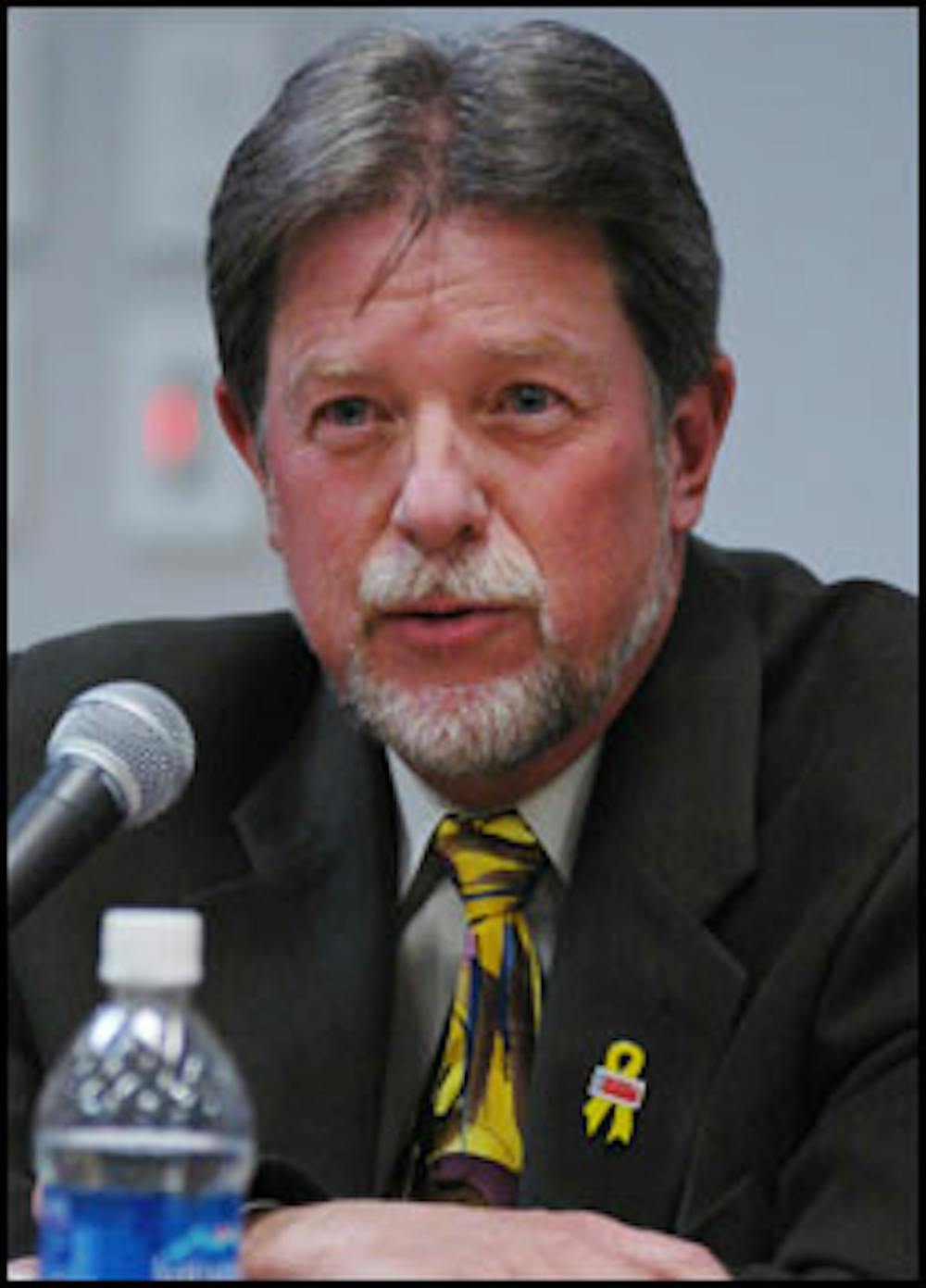Local television executives met on campus Wednesday to discuss the future of local broadcasting and technology changes the industry will face.
The event was sponsored by The Walter Cronkite School of Journalism and Mass Communication and the Arizona Broadcasters Association. About 250 students attended.
The Telecommunications Act of 1996 required TV stations to switch to digital within 10 years, said Art Brooks, president and CEO of the ABA.
"If the transition happened today, many people would lose [use of] their TV," Brooks said.
The shift from analog technology to digital will shift television transmissions from wavelengths to digital systems.
Some TV sets are built to receive analog signals, and will require new technology to receive digital signals.
The U.S. government has set aside $1.5 billion to subsidize set-top boxes for TV sets that will allow older TVs to accept the new technology, Brooks said. Manufacturer LG will sell the top box for $50, he added.
The panelists also discussed multicasting, where one station would have the ability to broadcast on four different channels at the same time.
The future of television could also include more "localism," panelists said. More channels would allow stations to broadcast more community events such as church services and sporting events.
Carlos Baca, a journalism junior, said he went because he wanted to know more about television changing from analog to digital.
"I think it is important [to be here] because it is something we will have to deal with in the industry," Baca said.
Alicia Pharris, media production senior, said she hopes to work in local television some day.
"I just want to keep up to date and learn which direction [TV] is going," Pharris said.
Journalism school Dean Christopher Callahan said he could not have been happier with the turnout.
"I think hearing from the people who are literally running the television industry in the Valley [was important to students]." Callahan said.
"I felt terrible because I had to stop the questions and everybody had more questions, which is always a good sign," Callahan said. "We went 15 minutes over, and we would have gone another hour."
The speakers included representatives from KAZ/Channel 14, KSAZ/Channel 10, KPHO/CBS 5, KAET/Channel 8, KPNX/Channel 12, Univision and KNXV/Channel 15.
The roundtable was the first in a series of discussions at ASU to explore the television and radio industries. The idea for the roundtable was developed by Jack Clifford, a Cronkite Endowment Board member and a longtime television executive who created the Food Network.
Reach the reporter at tatiana.hensley@asu.edu.




